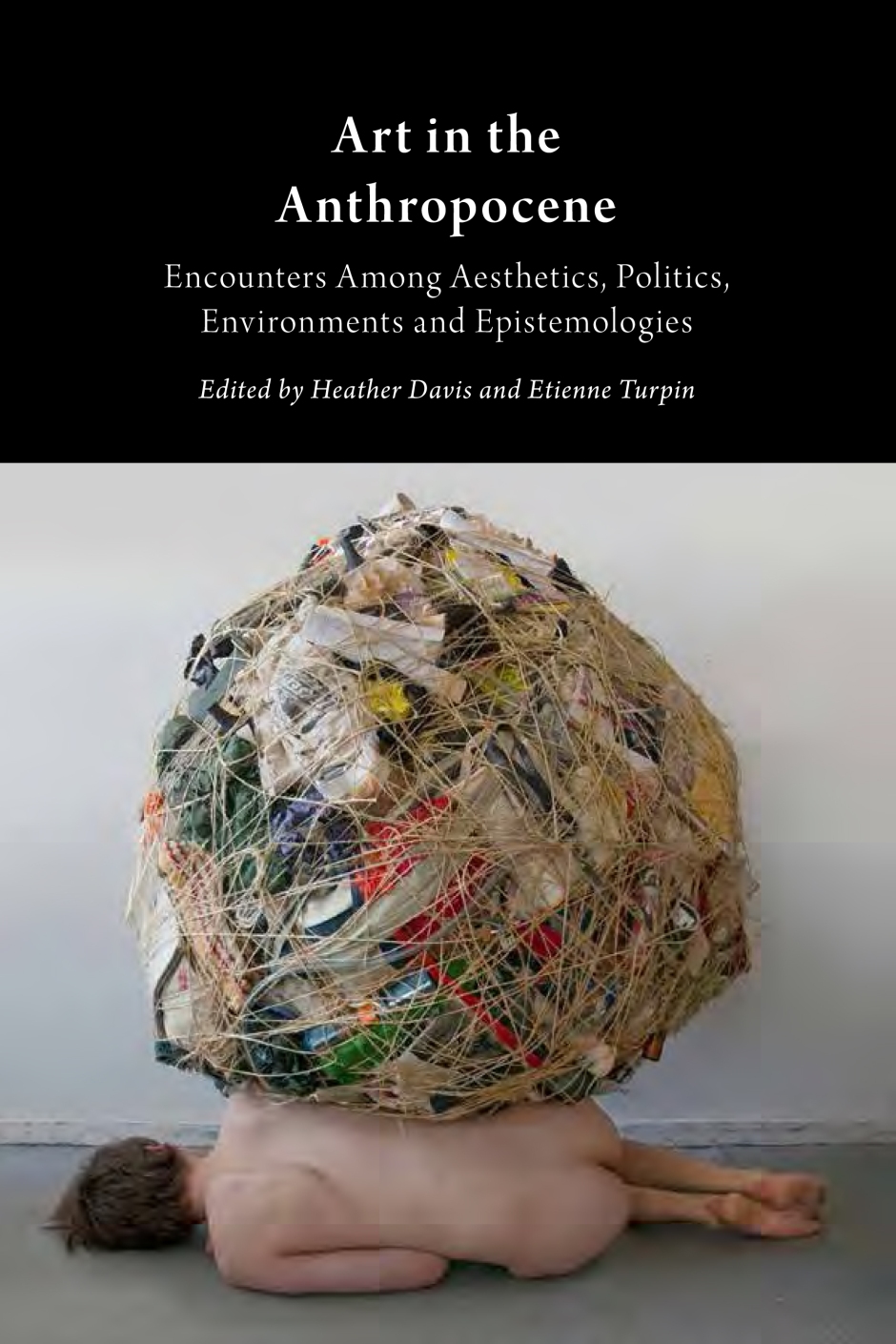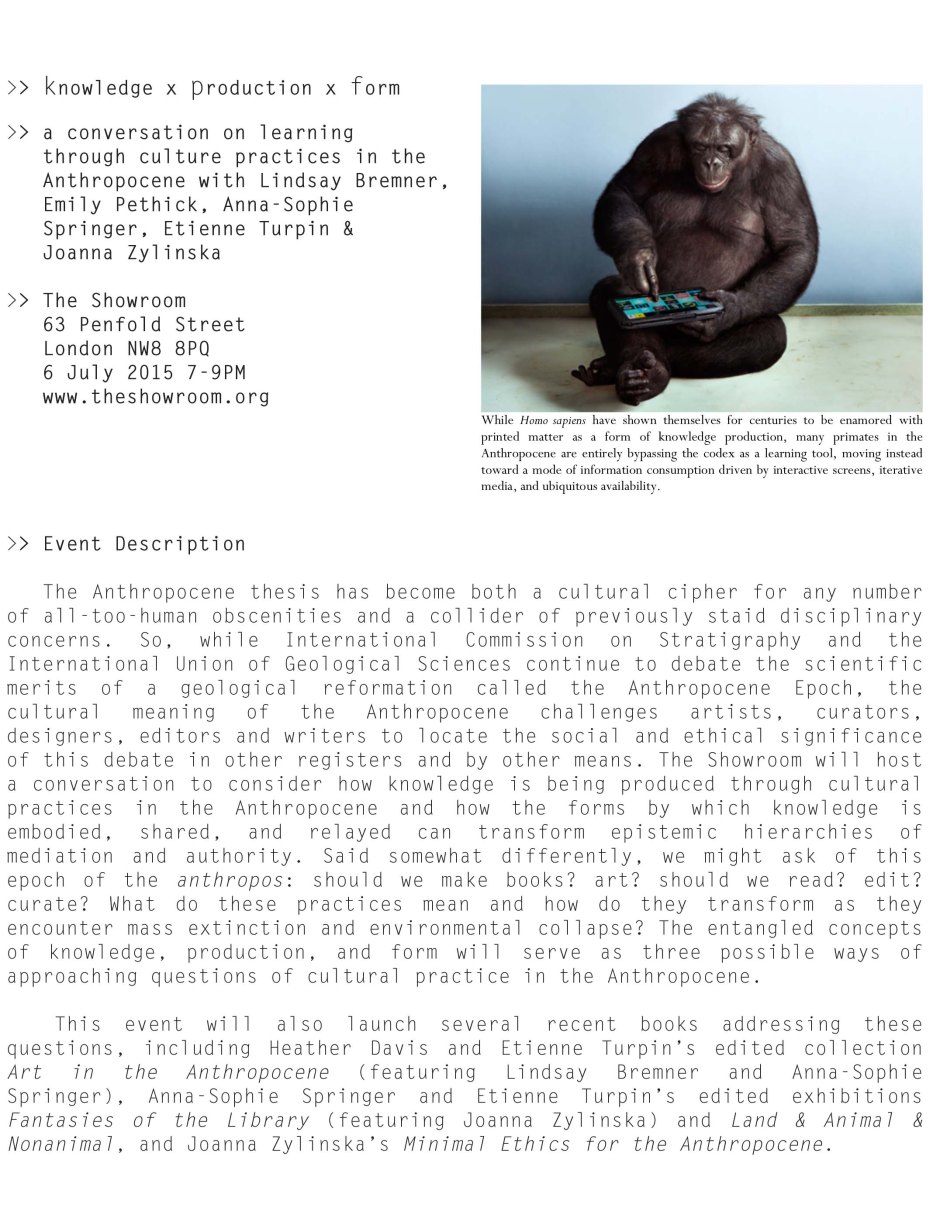
Art in the Anthropocene: Critical Encounters Among Aesthetics, Politics, Environment and Epistemologies, Ed. by Heather Davis and Etienne Turpin, Open Humanities Press / Critical Climate Change Series, 2015.
Taking as its premise that the proposed geologic epoch of the Anthropocene is necessarily an aesthetic event, this book explores the relationship between contemporary art and knowledge production in an era of ecological crisis, with contributions from artists, curators, theorists and activists.
Contributors include Amy Balkin, Ursula Biemann, Amanda Boetzkes, Lindsay Bremner, Joshua Clover & Juliana Spahr, Heather Davis, Sara Dean, Elizabeth Ellsworth & Jamie Kruse (smudge studio), Irmgard Emmelhainz, Anselm Franke, Peter Galison, Fabien Giraud & Ida Soulard, Laurent Gutierrez & Valérie Portefaix (MAP Office), Terike Haapoja & Laura Gustafsson, Laura Hall, Ilana Halperin, Donna Haraway & Martha Kenney, Ho Tzu Nyen, Bruno Latour, Jeffrey Malecki, Mary Mattingly, Mixrice (Cho Jieun & Yang Chulmo), Natasha Myers, Jean-Luc Nancy & John Paul Ricco, Vincent Normand, Richard Pell & Emily Kutil, Tomás Saraceno, Sasha Engelmann & Bronislaw Szerszynski, Ada Smailbegovic, Karolina Sobecka, Zoe Todd, Richard Streitmatter-Tran & Vi Le, Anna-Sophie Springer, Sylvère Lotringer, Peter Sloterdijk, Etienne Turpin, Pinar Yoldas, and Una Chaudhuri, Fritz Ertl, Oliver Kellhammer & Marina Zurkow.
This brilliant collection of essays and projects, gathered from all over the world, reflects the limits and possibilities of how visual art might respond to what Sylvère Lotringer describes as a "state of emergency." Art in the Anthropocene is at once an investigation and an homage to the natural world. It describes what we possess and what we have lost. —Chris Kraus
Art in the Anthropocene is an art book like no other, embracing an extraordinary range of subjects that affect what we call "our" environment. Visual artists are, for once, equal participants in these imaginative, intelligent, and informative discussions of the most pressing issues of our time, and deep time. —Lucy R. Lippard
Call it the Anthropocene, the #misanthropocene, or something else—there’s a growing recognition that these are damaged times, even if nobody is quite sure how to see, think, or feel them. That’s why Art in the Anthropocene is so important. Davis and Turpin have gathered up the seeds for a whole biome of art and thought about the things that really matter in this world. —McKenzie Wark
This is a rich, ambitious, and beautifully edited collection that reimagines the Anthropocene as an affective rather than a scientific fact. It touches the very core of our being (post)human—and of the space around us we variously call “the environment” or “the world.” Art in the Anthropocene is vital read for anyone who cares about art, animals, climate, ethics, extinction, justice, plants, poetry and the weather! —Joanna Zylinska



No comments:
Post a Comment
Note: Only a member of this blog may post a comment.